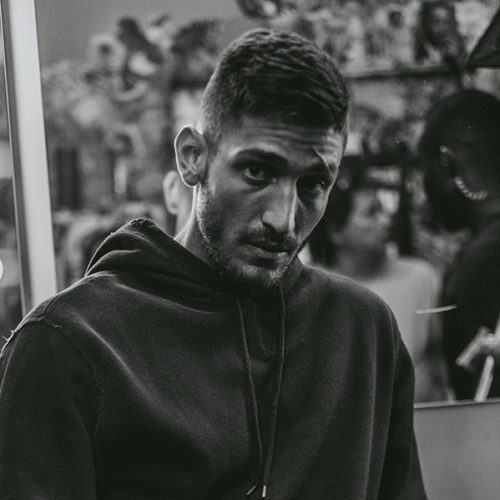Cassius Corrigan
One of the most exciting talents to break into the filmmaking scene over the last few years, rising Writer, Director, and Actor Cassius Corrigan is positioned to take the entertainment industry by storm.
Creating boundary-pushing stories that span genre and format, Cassius represents the next generation of multi-hyphenate filmmakers, bringing his passions for original storytelling, Latino-driven narratives and Mixed Martial Arts to life in film, television and documentary.
This year, Cassius makes his directorial debut with his critically acclaimed film Huracán. Praised by The New York Times as a gripping thriller they “couldn’t stop watching,” Huracán tells the story of an aspiring MMA fighter Alonso Santos (Cassius) who suffers from Dissociative Identity Disorder (aka Multiple Personality Disorder), which manifests itself in his aggressive and reckless “alter,” Huracán.
The film, which features a predominantly Latino cast, also stars Yara Martinez (Jane the Virgin), UFC superstar Jorge “Gamebred” Masvidal, Muay Thai world champion Grégory Choplin, actor/musician Steven Spence, and Colombian newcomer Camila
Rodríguez. Following a global festival run that culminated in an International Premiere at the 2020 Shanghai Film Festival, Huracán was acquired by HBO and became available on HBO and HBO Max on September 11, 2020.
Born and raised in Miami in a diverse family with Latino and Jewish roots, Cassius developed a global perspective that informs his filmmaking approach. He discovered the art of cinematic storytelling while on scholarship at the University of Southern California, graduating from its historic film school.
Cassius most recently wrapped production on the upcoming gangster film The Birthday Cake, which he Co-Produced and 1st AD’d. Directed by Jimmy Giannopoulos, the film stars Val Kilmer, Ewan McGregor, Luis Guzmán, and Penn Badgley, with Endeavor Content handling worldwide sales and targeting a Christmas 2020 release.
On the television front, Cassius was recently hand-picked by Brian Grazer and Ron Howard for their prestigious Imagine Impact program, designed to discover the filmmaking voices of the future. Through the program, Cassius has developed an original international MMA series set in Brazil, under the mentorship of Entourage creator Doug Ellin. He is also developing an original international music drama for eOne.
A passionate mixed martial artist who has created documentary content for Conor McGregor, Cassius is dedicated to creating breakthrough global content for the fast-growing sport of MMA, and to empowering Latino voices and stories through cinema. He currently splits his time between Los Angeles and Miami.
Photo credit: Galfry Puechavy




